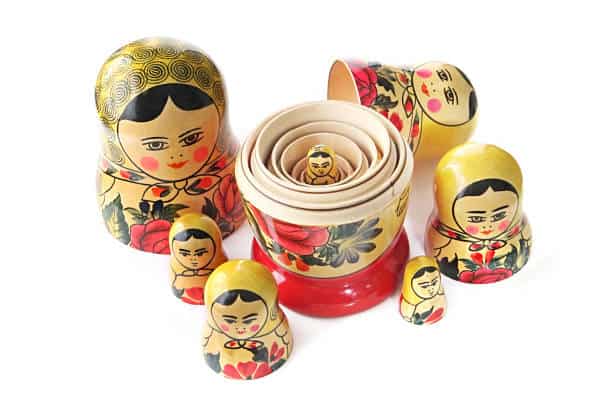
The cost of dissent is greater in the outer rings. Deep within the doll, squawks are barely heard. When the big doll is either pleased or upset, the next biggest doll is most likely affected. The celebration or the storm might not make it past that layer. Kids don’t always know why their parents are fighting.
Workplace culture only spreads organization-wide when it’s either positive and everyone buys in, or when it’s negative and has become a normalized pain. Otherwise, culture is stratified. It could be sour on the edge and sweet the middle. It could be world-class in Seattle and broken in Chicago. The marketing team might be thick as thieves while the sales team is backstabbing.
If you are one of the smaller dolls in the stack, become aware of your power. The big, outer doll probably isn’t even watching you. You are insulated by the structure of the system. Leverage the buffer between dolls to create quiet, systemic change.
Here’s how:
- Treat each other according to the values of the organization – as consistently as your maturity and wellness allows. Then fix any relationships you may happen to break if a bad day leads to some immaturity.
- Decide how your actions support the mission. Understand the vital importance of your role in the ecosystem, even if it’s just taking out the trash.
- Be willing to have an unfamiliar perspective. Groupthink is easily mistaken for engagement, but it’s often a symptom of feeling afraid to spark change.
- Collaborate with accountability. Hone your skills and become known as the person everyone wants on their team.
- Be willing to stretch beyond comfort. A fixed mindset is fatal to a career path. It quickly makes you obsolete.
- Embrace change and cope like an adult when things become stressful. It’s what happens under pressure that counts. That’s when it’s most important to be resourceful, adaptable, and adventurous.
It is a rare workplace that practices these behaviors consistently. Modeling can happen from the inside out as well as from the outside in. The smallest doll may actually be the strongest. Unlike her larger peers, she has a solid core and doesn’t split in half under a little pressure.

